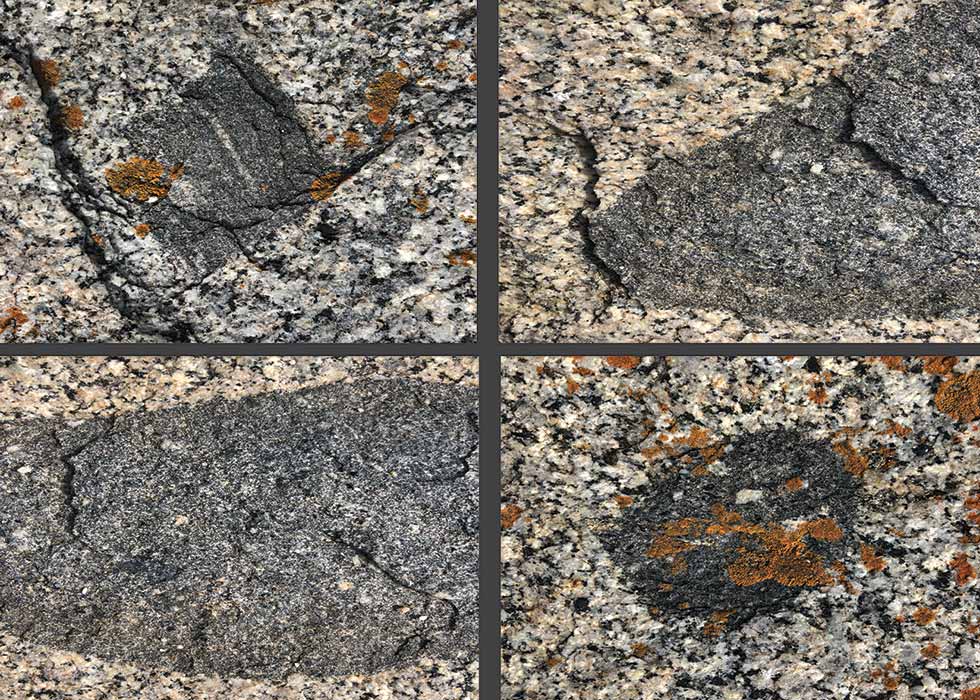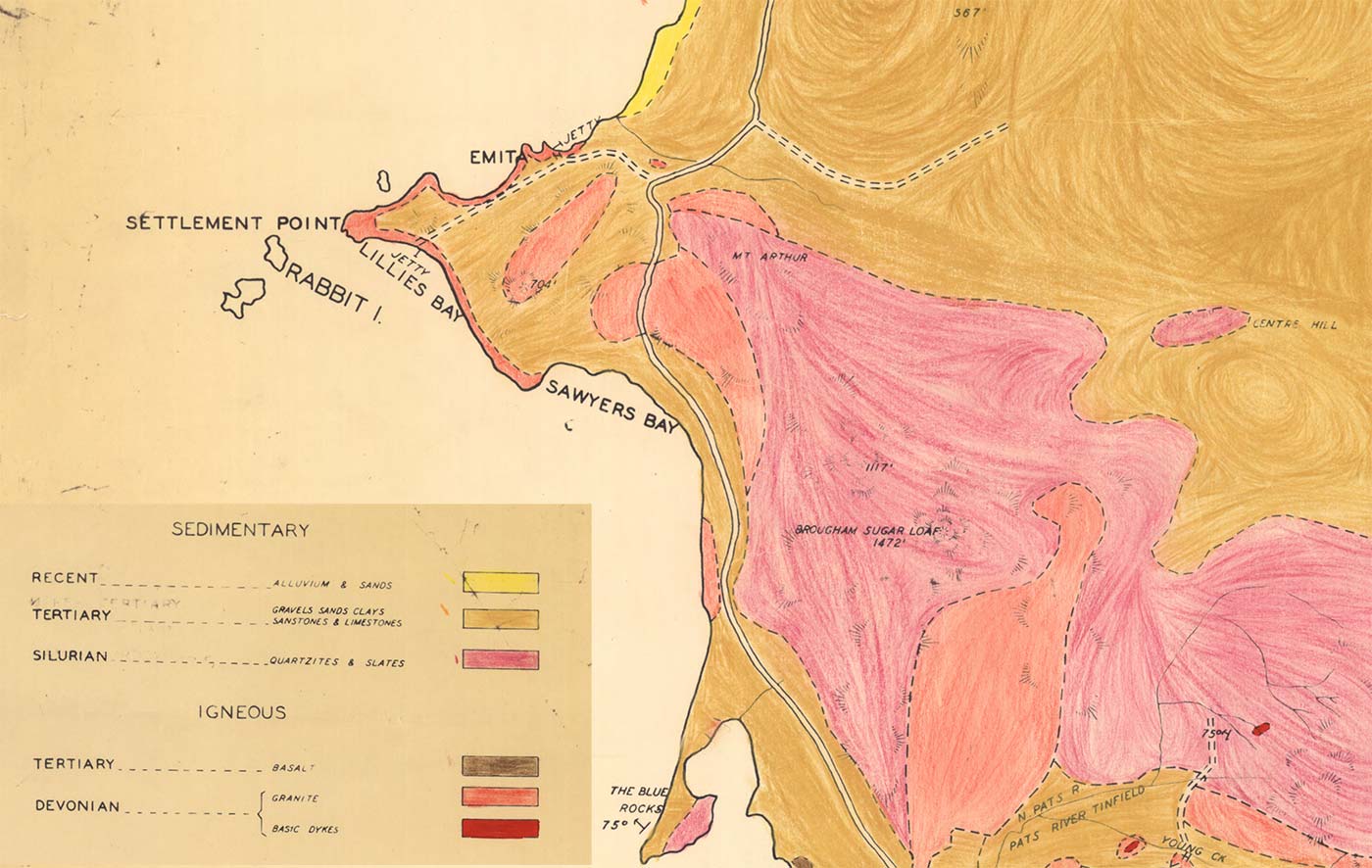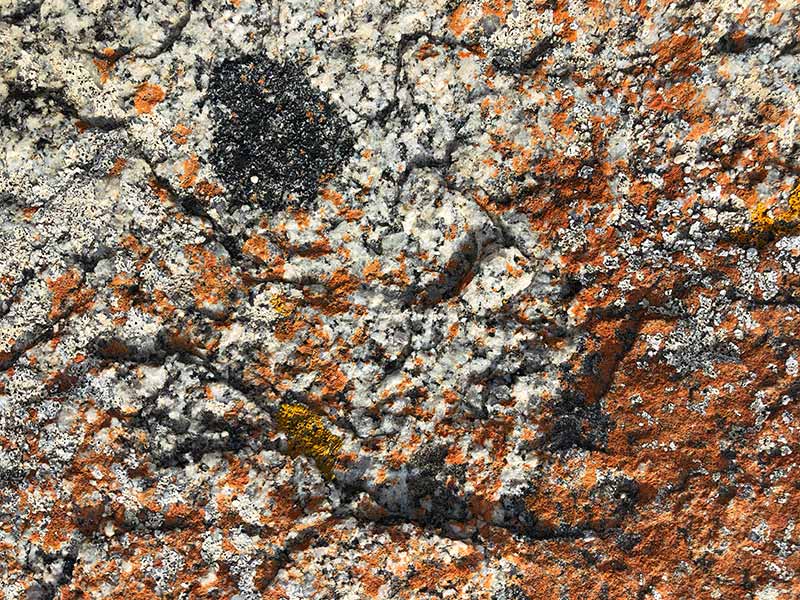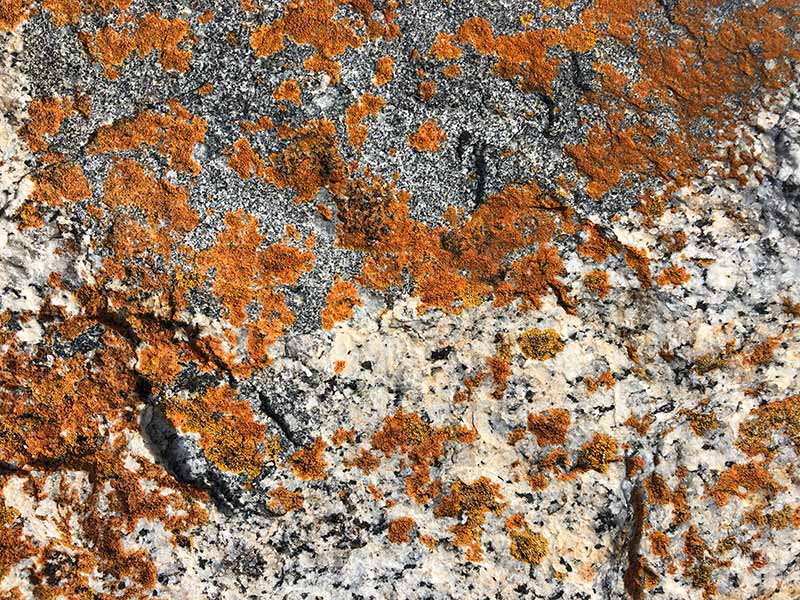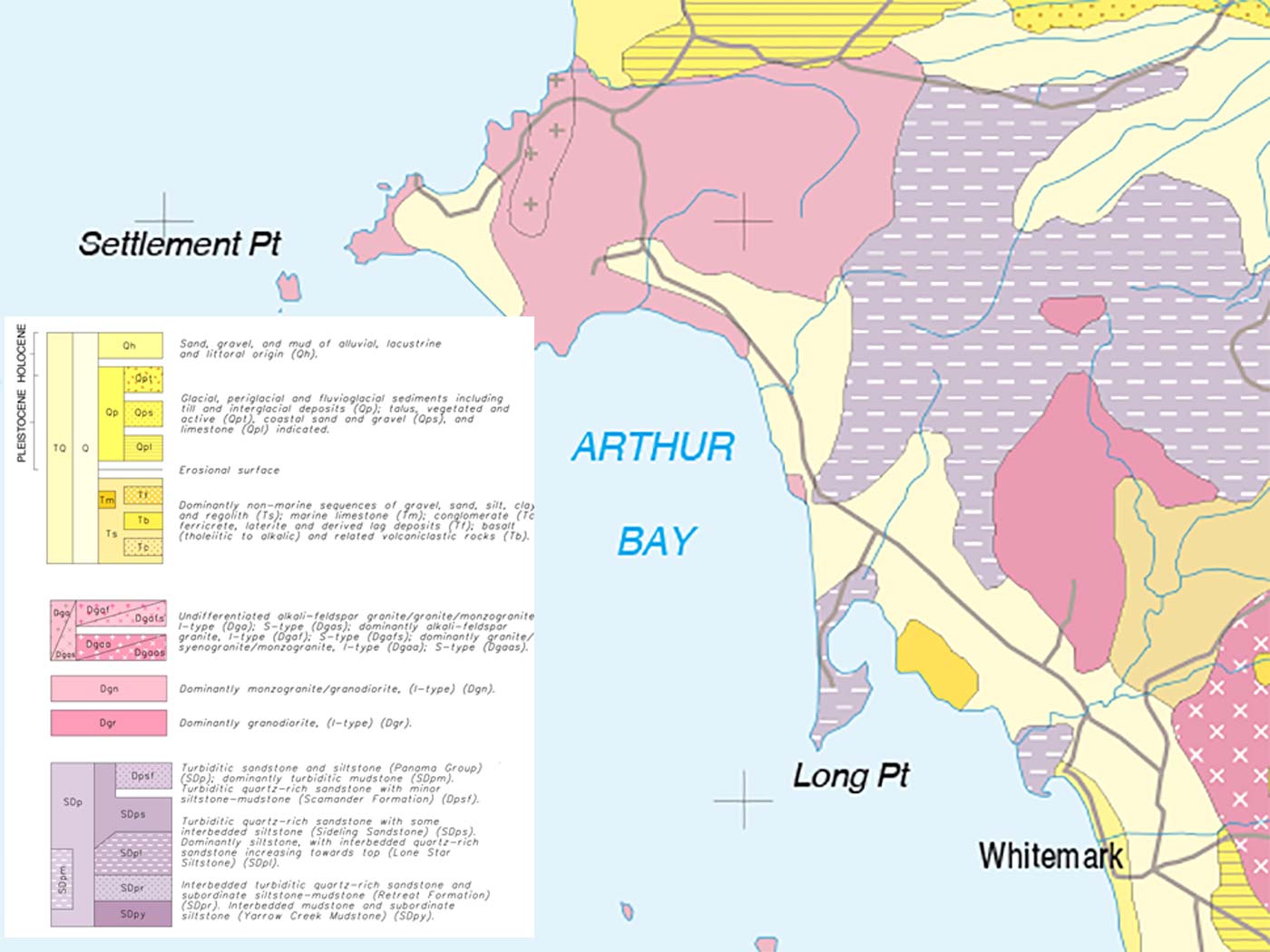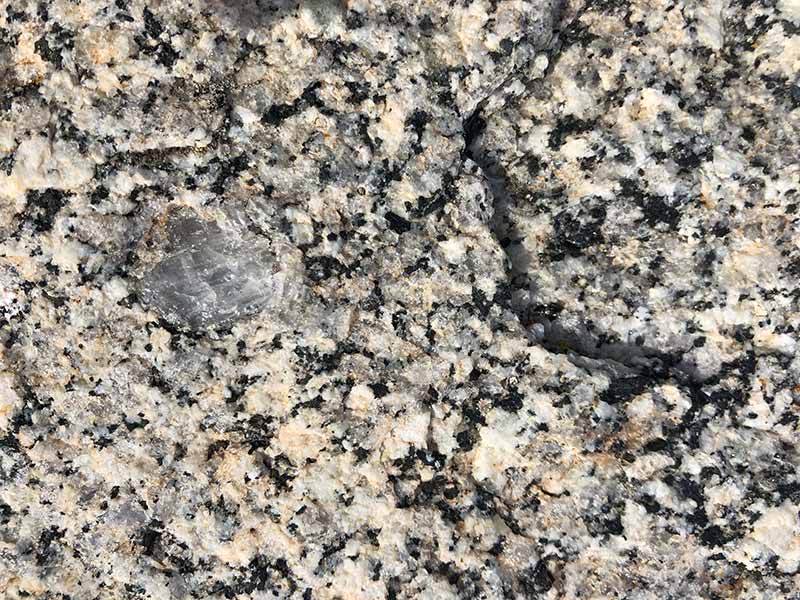The easiest way to appreciate the landscape at Settlement Point is to think of a thickly iced fruit cake.
The cake is the granite which was cooked up and cooled deep underground around 380 million years ago. Over millennia this rock was brought to the surface.
In the last few million years it has been ‘iced’ with a layer of limestone. This was created when shells washed up on shore and were blown inland.
There they formed calcareous dunes up to 10 metres thick, and later cemented together to form limestone.
Limestone ‘icing’
Looking at the dunes behind the beach you can see how sand accumulates. The limestone stacks sticking up from the water formed as calcareous sand dunes as the sea level rose after the last ice age.
Notice the clear angled bedding planes in the rock and how it is easily eroded to form arches and sea stacks with wave cut notches.
... the granite ‘fruity’ bits
The granitic rock at Settlement Point formed as a molten magma about 400 million years ago.
In contrast to most of the other granitic rocks on Flinders Island, this rock has a greater abundance of black iron-magnesium rich minerals such as hornblende and biotite. Geologists call this type of rock a ‘granodiorite’.
The small black blobs [below] that occur within the granodiorite are clasts of older igneous and sedimentary rocks that have been fragmented and captured by the magma as it intruded through the crust.





